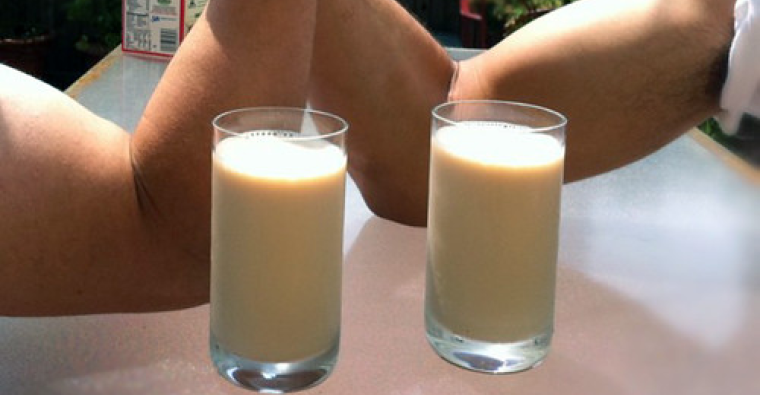In our previous post, we covered some of the clinical basics of prostate cancer, but now we would like to take a step back and look at the greater picture. Strange as it may sound, there is a logical explanation to the beneficial effect of lifestyle change on medical conditions typical to men. Also, prostate carcinoma is not the only threat to men’s health, what’s more, if you assumed women can’t get ever prostate cancer because they don’t have prostate glands, well, guess again.
A generally accepted view is that men live shorter because they like to live dangerously. The first thing I would say is, of course, because we are brave, and that is the way things are. As always, this is only partly true. On one hand, there is a pair of almond-shaped structure deep in the brain, called amygdala (Latin from Greek, amygdalē, “almond”) that is crucial for experiencing and remembering emotions like fear, which is slightly different in terms of anatomy and function in an average man compared to women, causing reduced sensitivity to dangerous situations (1,2). On the other hand, it is a matter of lifestyle, as “men put their health last,” says Demetrius Porche, editor in chief of the American Journal of Men’s Health. “Most men’s thinking is, if they can live up to their roles in society, then they’re healthy” (3).
The latter has a more profound effect on a man’s health, according to European WHO statistics, as the most frequent diseases causing men’s premature death in descending order are the following (4):
- 1. Cardiovascular diseases. Men across socioeconomic groups demonstrate unhealthier smoking practices, unhealthier dietary patterns, higher alcohol consumption levels.
- 2. Cancers. Lung, prostate and colorectal cancers are the most prevalent among men (5). Although, smoking tobacco is the leading cause of lung cancer, it can develop in non-smokers as well, and men tend to have jobs exposing them to other harmful chemicals in the air.
- 3. Respiratory diseases. Among these conditions, COPD (chronic obstructive pulmonary disease) is the most frequent, which is well-known to be usually caused by cigarette smoking and secondhand smoke (6).
- 4. Injuries. The formerly mentioned high risk-taking behavior explains this quite well, but also, under-use of services makes it worse. This is consistent across many countries and are linked to socioeconomic factors as well as to norms around masculinities and hegemonic ideals (4).
Most of these conditions point to more or less the same direction: unhealthy lifestyle. For men, lifestyle change can sound awkward and girlish, but I by no means intend to encourage my fellow males to start yoga immediately or eat only raw beetroot. Instead, I’d like to point out Aristotle’s teaching, the importance of Golden mean. This single idea can induce a mindset that mitigates the risk of almost all of the above conditions. For example, courage is a virtue, but taking it to excess would manifest as recklessness. Smoking have been a good way to preserve meat, as smoke particles are toxic to microbes, but this also holds true for our intestinal cells, that is why excessive amount of smoked bacon and grilled meat can lead to cancer in the GI tract (7).
Lucky or not, there are factors that influence our health beyond our everyday decisions. For example, prostate cancer is widely known for having genetic causes. Robust, genome-wide association studies have identified 100 common susceptibility loci (particular segments of DNA, most of the times are equivalent to what we call genes) contributing to the risk for prostate cancer, explaining ~38.9% of the familial risk for this disease. Furthermore, among men with metastatic prostate carcinoma, an incidence of 11.8% was found for germline mutations (12). This means that the mutation is hereditary, rather than caused by carcinogens. Interestingly, one of the suspected genes is BRCA1, which was named after breast cancer, but it also seems to play a role in the development of prostate cancer (12). Another contributing gene is named KDM6A, which is located on the X chromosome (10), meaning that women have two copies of them, thus they are much more likely to have at least one working copy.
But why is this noteworthy? Women don’t have prostate glands in the first place, right? Well, while it’s true that female prostate cancer is extremely rare, they do have a prostate, or at least a homologous one (that is coming from the same line of descent in an evolutionary sense), called Skene’s gland (11). It shows striking microanatomical similarity to the prostate gland and also produces PSA (not so specific to prostate now, is it?), and is thought to be playing an important role in the female genitourinary system, but its exact function is largely unknown, as it is a rather new discovery. Based on these findings, some researchers believe it should be called the “female prostate” (11).
References:
- Stanford Medicine.
- The Fine Line Between ‘Brave’ and ‘Reckless’: SPRING 2017, SEX, GENDER AND MEDICINE Amygdala Reactivity and Regulation Predict Recognition of Risk.
- Health Care: Current Reviews. Male in Health
- Men’s health and well-being in the WHO European Region
- American Cancer Society website
- Centers for Disease Control and Prevention website
- Well-done Meat Intake, Heterocyclic Amine Exposure, and Cancer Risk.
- Identification of 23 new prostate cancer susceptibility loci using the iCOGS custom genotyping array.
- Inherited DNA-Repair Gene Mutations in Men with Metastatic Prostate Cancer.
- UniProtKB – O15550
- The Female Prostate and Prostate-Specific Antigen. Immunohistochemical Localization, Implications of This Prostate Marker in Women and Reasons for Using the Term “Prostate” in the Human Female. Histol Histopathol.
- EAU – ESTRO – ESUR -SIOG Guidelines on Prostate Cancer

Benedek Molnár, MSc
Scientific Translator graduated at the University of Szeged | Neurobiologist MSc at University of Szeged | PhD studies in the field of Neuroscience at University of Szeged | Business Informatics at Budapest Business School

